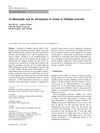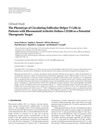Search
forProducts matching "b cell follicles"
Tracking 1 products like 110 FOLLICS FR10 from by companies like Minoxidil Express. View product »Learn
5 / 10 resultslearn Osteopontin
signaling protein that, when suppressed, may grow hair by reducing inflammation and stem cell loss
learn Overview
learn Dexpanthenol
precursor of vitamin B5 with hair stimulating effects
learn Procyanidin B-2
Research
5 / 1000+ resultsresearch RANKL Induces Organized Lymph Node Growth by Stromal Cell Proliferation
RANKL causes lymph nodes to grow by making certain cells multiply.

research Teriflunomide and Its Mechanism of Action in Multiple Sclerosis
Teriflunomide helps reduce multiple sclerosis symptoms and is safe for most patients.

research Keratin 17 Modulates Hair Follicle Cycling in a TNFα-Dependent Fashion
Keratin 17 is crucial for normal hair growth by regulating hair cycle transitions with TNFα.

research Regulatory T Cells in Autoimmune Skin Diseases
Treg dysfunction is linked to various autoimmune skin diseases, and understanding Treg properties is key for new treatments.

research The Phenotype of Circulating Follicular-Helper T Cells in Patients with Rheumatoid Arthritis Defines CD200 as a Potential Therapeutic Target
Targeting CD200 could be a new treatment for rheumatoid arthritis.
Community Join
5 / 917 resultscommunity Quote from Pelage (PP-405) Spokesperson...
Pelage is developing a topical hair follicle stem cell therapy, PP405, for non-scarring alopecias like androgenetic alopecia, with Phase III trials planned and a potential market launch by 2027. The treatment may not require continuous use after initial regrowth.
community The MPB itch aka DHT itch is very real.
Hair loss itch is caused by DHT attacking follicles and stimulating nerves. Finasteride users who respond well don't experience this itch.
community Story time! The Great Unbalding (PP405)
PP405 is a promising new hair loss treatment that may reactivate dormant hair follicles without side effects. It could surpass traditional treatments like minoxidil and finasteride if successful in further trials.
community Supplements for Health hair as for Gemini & Grok
The conversation discusses various supplements and vitamins like Vitamin D3, K2, Biotin, Iron, Zinc, and B Vitamins for improving hair health. It also mentions a combination of Tocotrienols, Pycnogenol, Saw Palmetto, Pumpkin Seed Oil, Stinging Nettle, and Myricetin for stabilizing hair, with Saw Palmetto, Pygeum, and Stinging Nettle noted for thickening hair despite side effects.

community Minoxidil Response Bottlenecks: Why Sulfation and Transport Matter (And Where Tretinoin Fits In)
Minoxidil's effectiveness is limited by the need for sulfation and proper transport to hair follicles, with tretinoin potentially enhancing its effects by promoting enzyme activity and keratinocyte differentiation. Tretinoin may improve minoxidil's response by boosting the expression of necessary enzymes and transporters.